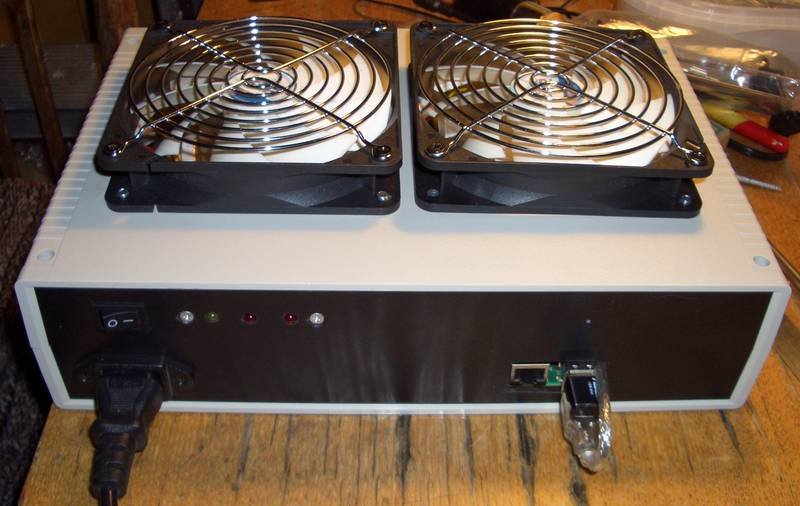How I did a Torrent-Box on a Raspberry Pi
Torrent box
This device based on the Raspberry Pi Model B was designed first for downloading and distributing torrents, and then the idea was to hang up the functions of an e-Mule compatible rocking and TOR anonymizer there.
At the beginning, I thought of using the Iconbit hds6l media center connected via Wi-Fi to a router as a silent and low-power torrent. But it quickly became clear that he understands Cyrillic in file names poorly, and Wi-Fi often hangs tight, so that only power off helps.
As a result of my research, this construction appeared:
')



The fans on the lid are more likely to be visible, they are connected to a voltage of 5V and flap their wings barely. Just the case remained from another project already with installed fans and power supply. Since the total consumption of the entire box does not exceed 10-15 W, the fans are superfluous here, although they do not interfere.
HDD is connected via USB-ATA / SATA adapter. In the remaining free Raspberry connector, an Asus N10 USB-WiFi adapter is installed, which has a decent sensitivity and is fully compatible with Linux.
LEDs on the front panel - Power, Internet, Download.
To manage the box, a regular Raspbian distribution kit is installed with Samba, Lighttp, Transmission, AMule, Tor, Polipo installed. Downloading the graphics subsystem in Raspbian is naturally disabled. To manage the download, you can use Web-interfaces - there are links to them on the main page of the device at:
http: // <address of the device on the local network> or
http: // raspberry
Box Web Muzzle:

Transission web-muzzle (username: pi, password: raspberry):


Web muzzle aMule (password: raspberry):


The files themselves are available via SMB (Windows Explorer) at the addresses:
\\ <address of the device on the local network> \ torrents
\\ raspberry \ torrents and
\\ <address of the device on the local network> \ amule
\\ raspberry \ amule

You can also use programs with interfaces similar to uTorrents and eMule - Transmission Remote GUI and aMuleGUI for management.
The programs themselves are here:
\\ <address of the device in the local network> \ Soft
\\ raspberry \ Soft
They need to be unpacked in a convenient place on the computer, run and configure, as in the picture below, on the connection with the box (login: pi, password: raspberry): Transmission Remote GUI


aMuleGUI (password: raspberry):


A TOR proxy is available as a SOCKS proxy on port 9050 of the device, and a TOR-HTTP proxy on port 8080.
Configuring Chrome browser to work with TOR-HTTP proxy:


And finally, a little about the settings of the Torrent-Box:
You can configure the box via SSH by logging in using the Putty program (username: pi, password: raspberry) and editing the appropriate settings files:


The settings of various programs are where they are supposed to be in the Debian distribution, on the basis of which Raspbian is built:
Samba configuration: / etc / samba
Transmission: / etc / transmission setting
TOR setting: / etc / tor
polipo configuration: / etc / polipo
aMule setting: /home/pi/.aMule

Just in case there are aliases for the network interface with fixed addresses: 192.168.1.81 and 192.168.0.81. All network settings are in
/ etc / network / interfaces,
and wi-fi settings in
/etc/network/wpa.conf
Source: https://habr.com/ru/post/255461/
All Articles